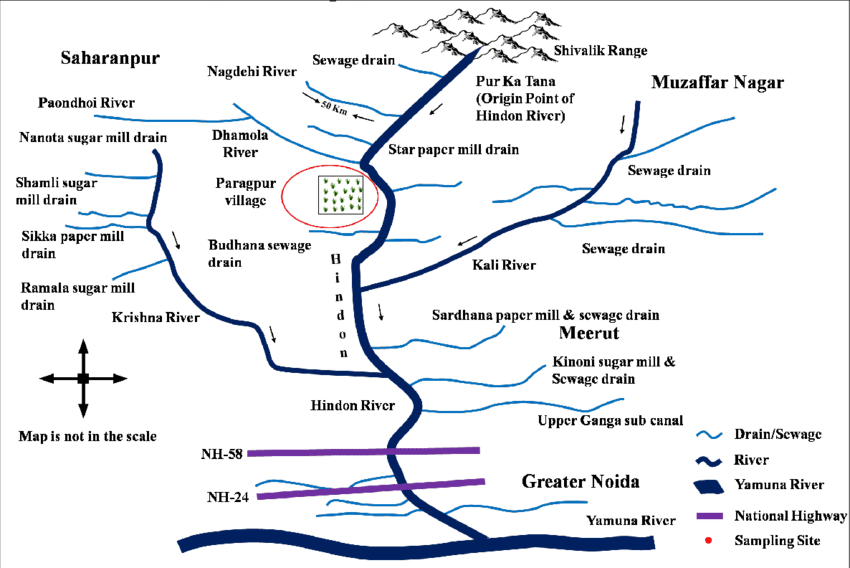Uttar Pradesh
Hindon River
- 18 Feb 2025
- 2 min read
Why in News?
Recently, a large amount of silt and religious material has been dumped into the Hindon River in Ghaziabad, further polluting the river.
Key Points
- The Uttar Pradesh Irrigation Department attributed the river's pollution to the release of untreated drains into it, along with mismanagement and neglect of water quality.
- Pollution in the river:
- Dissolved oxygen (DO) ranged from 1.43 to 4.22 mg/l, while the minimum DO required for aquatic life should be 4 mg/l.
- Total coliform levels range from 260,000 to 380,000 MPN/100 ML, while the standard limit is 1,000 MPN/100 ML.
- The Uttar Pradesh Pollution Control Board (UPPCB) has categorised the river's water quality as 'E', which means the water is suitable only for irrigation, industrial cooling and controlled waste disposal.
- In 2015, the Central Pollution Control Board (CPCB) declared the Hindon River a dead river , stating that it had high levels of pollution and was unfit for bathing in many parts.
Hindon River
- This river originates from the Shivalik Hills in Saharanpur district of Uttar Pradesh and flows for about 400 km in the industrial area of western Uttar Pradesh and merges with the Yamuna River in Noida.
- Hence it is a tributary of Yamuna River.
- It is a monsoon fed river.
- Its catchment area is approximately 7,083 sq. km.
- The Kali (West) River and the Krishna River are the main tributaries of the Hindon River.
- Evidence of the Harappan civilization has been found on the banks of this river, which dates back to 2500 BC.
- Ghaziabad and Noida are situated on the banks of this river.

.jpg)




